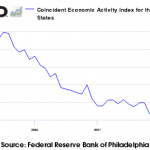
Tesla (TSLA) chief executive Elon Musk recently spoke at the Baron Investment Conference in New York City. Musk spoke at length about Tesla’s long-term ambitions, saying, among other things, that he sees the company producing a 500-mile range vehicle within a decade, and also reiterated the company’s ambition to churn out millions of cars in the future. Among Musk’s most interesting comments was the assertion that Tesla can grow bigger than General Motors (GM), noting that Tesla would have to build a lot more giga-factories to achieve that scale. After all, GM sold 9.7 million vehicles in 2014, becoming the world’s third-largest automaker while Tesla expects to sell just 50,000-52,000 vehicles in 2015.
Of course Mr. Musk may have made that comment about Tesla growing bigger than GM in light banter, though one suspects that deep down he truly believes that it could become a reality one day. But how realistic is that goal?
Bringing battery costs down
Tesla’s biggest problem right now is the lack of profits, which in turn is as a result of limited production. Although its possible for even a small automaker to be solidly profitable, that is usually the preserve of ultra-high-end brands that sell for a prince’s ransom. A good case in point is Ferrari NV (RACE) whose IPO was held recently.
Ferrari enjoys an EBIT margin of around 14%, way higher than what your average auto manufacturer can lay claim to. The Italian manufacturer is ultra-high-end and severely caps the number of vehicles available for sale to preserve the exclusivity of its brand. Ferrari sold just 7,225 vehicles in 2014. Despite the unusually low volume, Ferrari is solidly profitable and its FY 14 earnings of $275 million euros clocks in at a good 12.1% of parent Fiat Chrysler (FCAU) earnings despite contributing just 2.9% to Fiat’s top line. Ferrari of course has the high ASP of its models to thank for its fat bottom line–the company’s entry-level F12 Berlinetta starts at around $320,000 while its high-end “LaFerrari” costs a prince’s ransom–$1.2 million.



















Leave A Comment